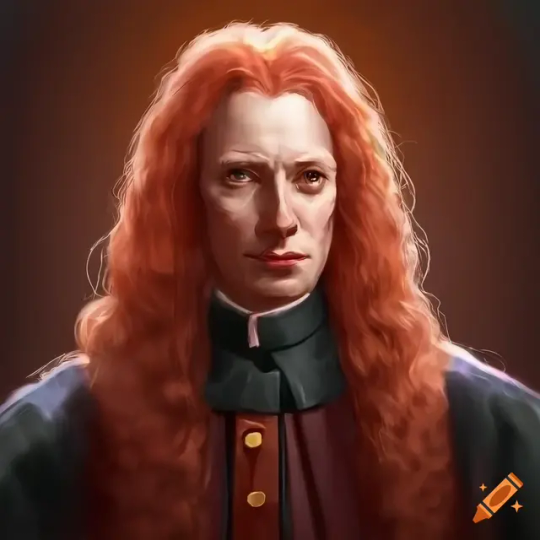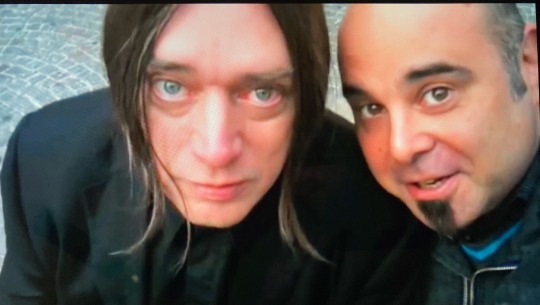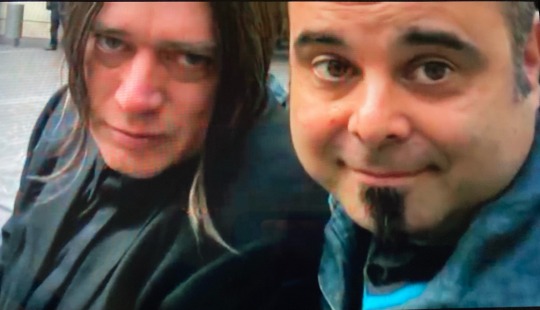#italian composer
Text
youtube
Gaetano Donizetti (1797-1848) - sonata for flute and piano.
Maxence Larrieu, flute & Jean Jacques Balet, piano
11 notes
·
View notes
Text
youtube
Dear listener, I tried listening to six full hours of mainstream radio this week again. I tried, oh, sweet merciful Jesus, I tried. Lo, I have at this point all but confirmed that modern radio is a steaming pool of liquid dogshit. Given a second appraisal, it’s dogshit with a candy-coated hardshell for ease of ingestion! The disheartening repetition, the complete lack of cutting-edge creativity and genuine emotion, ten to twenty ass-ramming commercials in a row only to come back to the feckless frenzy of fail that comprises the vast, vast majority of modern music? It was all terribly grating, and somehow the music was even worse. As soon as I couldn’t take a millisecond more of the doldrums of modern radio, I went to YouTube and listened to two straight and comparatively blissful hours of immortal work by Antonio Vivaldi. So, get into the time machine again with me dear listener, and set course for the early 1700’s, a time when radio didn't exist! The social standards might not have been top-notch, but the powdered wigs were undeniably gorgeous, and the quality of the music… to die for!!!

As anyone who comes from a musical family has likely experienced, Vivaldi had the principles of composition fused to his DNA, and perhaps even down to the subatomic level with the help of his father. Having trained for priesthood in his early years, Vivaldi instead gradually gravitated toward a now celebrated career in music. Becoming an elite level violinist under the tutelage of his father Giovanni Battista, whom he regularly toured Venice and played duelling violins with, this legend of orchestra developed an immense capacity for transforming the basics of music into something so immensely interwoven and sublime that very few can or will ever dare so much as approach the legitimate majesty of his body of orchestral work. Known as something of an Italian religious dogmatist, his calling to the church and desire to be a priest secured him the nickname ‘Il Prete Rosso’ (The Red Priest) because he was a ginger, or in modern politically correct parlance… a natural red head. During a three-decade long gig serving as Master of Violin at an historical Vincentian orphanage, Ospedale della Pietà, Vivaldi managed to gather inspiration and organize his most emotionally powerful compositions. I could probably add a lot of unnecessary details here, but his greatest and most everlasting works are part of his ‘The Four Seasons’, a set of four violin concertos that are meant to express nearly the precise sensations and emotions of summer, winter, autumn, and spring. If you smash play on the above track you will be treated to Presto (from the Summer section), a song you probably know or have heard before. Presto means ‘quickly’ in Italian and is performed at one of the quickest speeds a human can possibly play music (second only to prestissimo speed, I think). Vivaldi also had a strange disease throughout all his life which many historians suspect might have been severe asthma. And with his penchant for taking numerous ‘leaves of absences’ to tour the world and develop an international reputation, this clearly mega-talented rockstar of yester-century ended up spending all the money he earned during his lifetime. Sadly, after approaching the end of his life and skidding through a decade’s worth of career decline, all accounts show that he died completely broke, having spent what little money he had left on multiple assistants that circumnavigated him through his now dire and at the time completely untreatable health issues. Vivaldi isn’t my personal favorite composer of all-time, I’ll leave that distinction to Bach (who himself was inspired by Vivaldi). But his works live on to this very day because he accomplished exactly what he strove to do; embody the excellence of execution in his craft to produce works that bring us together as human beings and sometimes inspire a rare spark of imagination to propel us to create the very best work we can possibly bring forth.
youtube
Right above this paragraph is a live variation of The Four Seasons, a classic musical work of art and transcendent beauty that I cannot recommend highly enough. Vivaldi sure did one thing that modern, corporately funded, concentrated and even desperate bands just can’t… and that is actually innovate. He had immense natural technical skills, had them brought to bloom by his family and his own efforts, and he ended up creating over 500 instrumental and choral works, plus about 40 operas. Have *you* created 500 instrumental and choral works and 40 operas!? Didn’t think so. So, get to work on that! And join me next time for some jaunty Brahms. Image source: https://www.craiyon.com/image/dPwZA5VRRTawSH1T9Sslcw
#vivaldi#antonio vivaldi#music on tumblr#classical music#the four seasons#presto#music from the 1700's#audio video#music video#audio on tumblr#classical composer#composer#baroque#legend#violinist#orchestra#Italian composer
24 notes
·
View notes
Text



Adorable Screencaps from this video of Blixa and Teho.
youtube
#blixa bargeld#blixa#teho teardo#collaborations#german composers#italian composer#einsturzende neubauten#nick cave and the bad seeds#neubauten#einstürzende neubauten#german music#Youtube
12 notes
·
View notes
Text

this cathartic ass playlist
#music#janet jackson#brazilian music#milton nascimento#italian composer#stelvio cipriani#piero piccioni#yusef lateef#piero umiliani#alternative rnb#zhané
6 notes
·
View notes
Text


OTD in Music History: Virtuoso pianist and composer Ferruccio Busoni (1866 - 1924) makes his debut as a concert artist, at the age of seven, at the Schiller-Verein in Trieste. The young Busoni plays the first movement of W.A. Mozart's (1756 - 1791) famous Sonata in C major (K. 545), as well as a handful of pieces by Muzio Clementi (1752 - 1832) and Robert Schumann (1810 - 1856). Commercially exploited as a child prodigy by his own parents in a series of further concerts, Busoni later bitterly complained: "I never really had a childhood."
From the very beginning, Busoni was hailed as an outstanding (if sometimes controversial) pianist. He lived a restless life: After completing his studies at the Vienna Conservatory, he taught briefly in Helsinki, Boston, and Moscow, before devoting himself to a life spent composing, teaching, and touring widely across Europe and the United States as a concert pianist. His writings on music were influential and covered not only aesthetics but considerations of microtones and other innovative and rather advanced technical topics.
Busoni began composing in his early years in a late romantic style, but after 1907 -- when he published his most influential treatise, "Sketch of a New Esthetic of Music" -- he developed a much more individual style, which sometimes even flirted with atonality. His visits to America led to interest in North American indigenous tribal melodies, which were also reflected in some of his works.
Busoni's compositions are often fascinating, although they are rarely heard today. The bulk of his substantial output is comprised of works for piano, among them a monumental ~70 minute Piano Concerto, as well as transcriptions of the works of others -- most notably Johann Sebastian Bach (1685 - 1750), which are still in print and available as the "Bach-Busoni Editions."
PICTURED: A c. 1910 real photo postcard, showing the youthful Busoni in a typically pensive pose.
#Ferruccio Busoni#Italian composer#composer#classical composer#pianist#conductor#writer#teacher#music teacher#singing teacher#voice teacher#Piano Concerto#Piano#Concerto#Romantic music#chamber music#music#music history#classical music#opera#bel cano#orchestra#Doktor Faust#Cadenza#Preludio#Sonata#Ave Maria#virtuoso#Busoni
6 notes
·
View notes
Text
La stupenda
youtube
#Leontyne price#opera#opera singer#opera staging#Italian composer#verdi#Giuseppe Verdi#il santo nome#La forza del destino#Youtube
3 notes
·
View notes
Text
0 notes
Video
youtube
NEW VIDEO ;) <3
Tears - Marzia Gaggioli - All My Songs (2002)
#youtube#pop#jazz#jazz music#marziagaggioliofficial#singer#songwriter#composer#compositori#italian composer
0 notes
Text

#italy#italian stamps#italy stamps#vivaldi#famous composers#italian composer#music#postage stamp#philately#vintage stamps#ephemera#stamp collecting#1970s
0 notes
Text
"I learn that the orphanage was created in part because illegitimate babies were being drowned in the Venetian canals. I learn that the girls of the the Ospedale della Pietà were allowed to play instruments usually reserved for men; that they earned money for their performances and rubbed shoulders with kings and queens. “What makes the Pietà so famous,” wrote the Prince of Saxony, Frederick Christian, after seeing them play in 1704, “is not just that all of the instrumentalists are truly excellent musicians, but … that all of the instruments are being played by females without any males in the ensemble at all.”
I discover that Vivaldi spent almost his entire career working at the Pietà and composed most of his pieces while there. But of the hundreds of girls and women who studied there, one name keeps rising to the surface: Anna Maria della Pietà. A prodigy violinist, she was Vivaldi’s favourite student. He composed many pieces just for her. It was in this experimental environment, with a plethora of talented female musicians to test ideas with, and Anna Maria by his side, that Vivaldi was able to perfect a whole new form of music: the concerto, most famously realised in his Four Seasons.
I learn that several of the orphans at the Pietà were composers in their own right, in addition to many being copyists. In the study Women and Music, researchers Yves Bessieres and Patricia Niedzwiecki describe the Pietà as a “nursery for the virtuosos who provided Vivaldi with his ‘musical material’”. They cite a letter from a Pietà student called Lavinia and write, “[Lavinia’s] cantatas, concertos and various works had to be composed in secret and in imitation of Vivaldi’s style.” But Lavinia wanted to compose her own pieces too. “The music of others is like words addressed to me; I must answer and hear the sound of my own voice,” Lavinia wrote. “And the more I hear that voice, the more I realise that the songs and sounds which are mine are different … Woe betide me should they find out.”
I speak with another scholar, Vanessa Tonelli, a leading expert on the female musicians of Venice. Is it possible that these girls helped Vivaldi compose his works? “Anna Maria certainly designed her own solo cadenzas for Vivaldi’s concertos,” she tells me. She explains that some partbooks that belonged to the girl musicians still exist, and that there are examples within these of notes and solo lines scribbled into the margins. “Musicians often improvised cadenzas, ornamentations, and other solo lines, and they occasionally jotted down their ideas for these improvisations.”"
#history#women in history#Ospedale della Pietà#Anna Maria della Pietà#18th century#antonio vivaldi#composers#female composers#classical music#venice#italy#italian history#women's history
57 notes
·
View notes
Text
youtube
Paolo Lorenzani (1640-1713) - Dialogue entre Jesus et l'Ame a 5 voix avec simphonie
Choir: Concert Spirituel Chorus, Conductor: Herve Niquet
12 notes
·
View notes
Text
The original waltz, "Fascination", written in 1904, and quite fitting to the game: composed by a man who had italian origins, but written in france.
Do you ever think he imagined people still like his song?
youtube
#I think this is my favourite version of “Fascination” right now (other than the LOP version)#lies of p#liesofp#to elaborate: its VERY fitting that it was composed by an italian man who later moved to france. just like the game itself!#which is inspired by italian literature but set in a french time period. and i wonder if the devs chose this track for that very reason#the song would also become emblematic of the era#and was chosen to be representative of the game#as it is the first track to be played in its end credits and was used in a promotional trailer at gamescom 2023#Youtube#the maya barsony version (recorded for the film La Vie En Rose playing Edith Piaf! so it is not her) also my favourite
39 notes
·
View notes
Text

Italian opera singer Nini Giani as Lubava in Rimskiy-Korsakov's opera "Sadko",Italy (XX century)
#Italia#Italy#vintage#photography#Nini Giani#русская опера#Russian opera#opera#Садко#Sadko#русский композитор#russian composer#composer#Николай Римский-Корсаков#Nikolay Rimskiy-Korsakov#Italian#русская культура#russian culture#culture#Europe#italian opera#history#beauty#black and white#european#vintage photography#20th century
19 notes
·
View notes
Text
Slow piano morns stay undefeated
from Sonatina Op. 36, No. 4 by my boy muzio clementi
#piano#pianist#muzio clementi#clementi#classical music#romantic composers#classical composer#composer#composers#i’m rusty#this was good though#me#mine#music#italian#reblog#message me#say hello#the pops
8 notes
·
View notes
Text


went to d'orsay yesterday and louvre today and of course they had nothing w/ the good napoleon portrait on it so obviously i bought a whole ass book instead (it was on sale for 16 euros thank jesus) next time everyone else in the louvre should leave when im there or i get the right to kill them when they get in my way
plus went to père-lachaise and rossini may not physically be in there but i had to come and see the guy. forgot to bring flowers ill do it next time bc you deserve some babygirl

#i also went to bellini but i didnt take a picture there. also uh why is oscar wilde's thing the ugliest one in the whole ass cemetery#we walked around there for like 2 hours just looking at the sculptures and all#rip that guy who'd had himself cast himself in bronze lying supine with an obvious bulge and everyone's been touching that so much#it started to gleam while the rest of it had gotten green. shouldn't have given himself a death bulge ig#curry rambles#and liberty leading the people finally seen it irl#my sister: can you sit like that on a grave#me: he was an opera composer and he was italian. he will just have to deal.#sorry for holiday posting
10 notes
·
View notes
Text
my girlfriend is so fucking hot
#no longer remember why i was composing this post in particular but they saw it open in my browser window and were very entertained#so i consider it successful regardless#some randomly selected girlfriend qualities for your delectation:#- shapely and beautiful nose#- appreciates blue jays#- cute knees#- went to a new bakery with me today and got intensely excited about black and white cookies and pizzelle. like really excited#really very very excited#I Love My New York Italian-American Girlfriend#box opener#girlfriend tag
11 notes
·
View notes